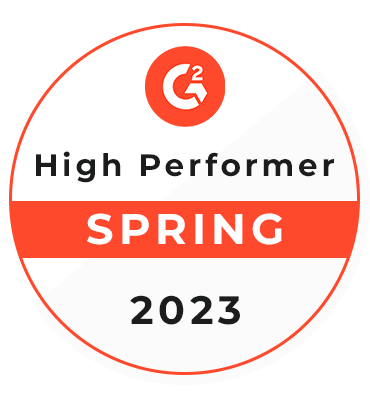The Process of App Development from Discovery to Development for Chicago Businesses
Manish Kumawat
Last Updated on: 20 March 2024
If you are seeking guidance to develop a mobile application for your business in Chicago, We are here to assist you with a deep understanding of the process of App Development from Discovery to Development. Follow the top tips for each stage of app development given below, so that you can get a unique mobile app that grows your business.
Let's understand the process of App Development step by step
When you go to develop an app for your business in Chicago, You have to know the process of app development step by step. The following 7 steps are the key part of app development.
1: Conceptualization
Ideas spark innovation, and the mobile app development industry is similar. During the ideation phase of the app creation process, you must consider the following and provide proper answers:
- Will my app provide users with something special?
- Who is my future app's targeted user base?
- How to build an app that is different from other similar apps?
- What all I need to turn my idea into a reality?
Tip 1: Examine a few of the existing apps:
Get a few apps on your phone that are comparable to the ones you plan to make. Answering the questions like What is lacking for them? What plans do you have to improve the functionality or design?
Tip 2: Look through social media platforms:
Unbiased opinions and the most recent developments in mobile development can be found in abundance on social media. Examining posts, comments, and hashtags associated with your sector on important social media networks.
Tip 3: Talk to potential customers:
To stay in touch with your target market and find out about problems that users of your competing apps are having. The best app development consultancy service in Chicago, Fulminous will assist you at this stage.
2: Discovery stage
You should always begin with a thorough review of your competitors and market research. For this reason, at Fulminous, we usually advise starting the development of a mobile app with a discovery phase. Whether you have a rough idea for an app or have a detailed sketch of what you hope to achieve, conducting a thorough discovery can help you organize everything and launch the mobile development process with confidence.
The discovery stage is essential to the creation of a successful mobile app for the following reasons:- Finding market trends and opportunities:Market research aids in your comprehension of the interests and behaviors of your intended audience.
- Recognizing the behavior of users: You can learn about user behavior in terms of app usage, purchase trends, and factors that influence app downloads by conducting market research.
- Assessing competitors:It's a poor idea to underestimate your rivals, therefore conducting a competitor analysis is a smart way to learn about their advantages and disadvantages. Additionally, you may pinpoint any weaknesses your rivals could have and improve the functionality and design of your mobile app accordingly.
- Creating a better user experience:You can establish precise business objectives, design concepts, and technological requirements by having a thorough grasp of user demands and behavior.
3: UI/UX design
The usability, functionality, and aesthetics of a mobile application determine how appealing it is. In this stage, more precisely, you need to confirm that you have determined the following:
- Recognizing how users will utilize the application
- Finding possible sources of discomfort
- Creating an ideal user route map
- Choosing the user information you want to gather
Wireframing
Wireframing is the next stage in the design process once the user flow has been determined. Low-fidelity, streamlined graphic representations of the app's navigation, content, and layout are called wireframes.
Several well-liked tools are available for making efficient prototypes:- One of the most widely used tools for interface design is Figma, which enables designers to produce high-fidelity designs, prototypes, and wireframes.
- Prototyping and wireframing are just two of the many design techniques available in Sketch, a fantastic macOS program.
- The design tool Adobe XD is available for Windows and macOS and has an easy-to-use interface. You may make unique, shared links to your design with restricted view rights using Adobe XD.
- An online application called MockFlow might help you make the design process go more smoothly. It is good for simple prototypes and is free for two design spaces. Fulminous Software has a team of 50+ skilled UI/UX designers who can ensure the success of your business app in Chicago.
4: Mobile app development
Here, there are main two things to think about. The first one is:
Which category of mobile application is best for you?
You must first decide on the kind of mobile application you want to create. To select the best alternative from the following, take into account your main objectives, your budget, your timelines, the functionality you want, and the preferences of your target audience.
- Native apps are designed specifically for an operating system, such as Android or iOS. Among other app kinds, you can obtain the best user experience, high security, rapid speed, and good compatibility by using platform-specific languages. Creating native apps also necessitates creating distinct codebases for every platform, which may be costly and time-consuming.
- A single codebase that can be used to create apps for several platforms is used to create cross-platform apps. Although many programs are less expensive than native ones, their performance and user experience might not be on par.
- Progressive web apps (PWAs) simulate an app experience by utilizing contemporary web capabilities. PWAs can't use every feature of the device because they operate within a browser. PWAs are generally a good substitute for straightforward apps with constrained features.
- Web and native applications are combined to create hybrid apps. Trending web technologies like HTML, CSS, and JavaScript are used by these apps. Hybrid apps are far more responsive than web apps, even though they cannot provide the same excellent performance as native apps.
At Fulminous, a wide range of app development services are available for native apps. Cross-platform apps, PWAs, and hybrid apps. To know more, send Message at-info@fulminoussoftware.com
What kind of technological stack and technical architecture is required for your mobile app?
The two sides to mobile app development are the front end and the back end, which are connected by API.
- The goal of front-end development is to create a user-interactive interface that is responsive and easy to use. The user interface that appears when a mobile application is downloaded, opened, and used is known as the front-end.
- The back-end department is in charge of server or back-end work and is considered the brains of the enterprise. The back-end infrastructure of your app needed to be stronger to function flawlessly and provide a fantastic mobile experience.
- Various app components are connected and provide access to robust functionalities like geolocation and cloud storage by the Application Programming Interface (API).
At Fulminous, we use our extensive knowledge of developing custom mobile apps to suggest the best tech stack for your specific situation. Call now at +18033105187 and start an incredible app development journey with us.
5: Mobile app testing
Testing is the best precaution against major problems and maintaining compliance with standards at every stage of the mobile app development process. Throughout the app development lifecycle, the Fulminous app development team usually employs the following testing strategies:
- Checking each feature and making sure your program runs correctly by the requirements is known as functional testing.
- User experience is the main emphasis of usability testing. QA testers usually imitate user flows to assess the navigation ability of the application. A group of users may occasionally participate in usability testing to offer input on the functionality, layout, and design of the app.
- App performance testing involves putting it through various stress tests, such as high loads or weaker connectivity. The speed, responsiveness, and stability of the app in various situations are displayed in this.
- User data is safeguarded against breaches and data leaks by security testing. Testers carefully examine the data encryption, storage, authentication, and permission procedures of the app in this.
- In particular, compatibility testing is essential if your app is intended to function across several mobile platforms and operating systems. The functionality of the application across a range of screen sizes, resolutions, and hardware setups is tested in this process.
- Regression testing makes sure that after every update, the application won't break. Regression testing confirms that quality isn't sacrificed in the process of adding new features or addressing faults.
6: Launch of Mobile app
It's time to release the software onto app stores when the development and testing phases are over. The standards of the store must be followed when verifying the mobile application. The software must meet the requirements to be approved by the Google Play Store and the Apple Software Store. An app may be rejected if it contains any bugs, technical issues, or infractions of the store's rules. App developers from Fulminous are well-trained for this stage and carefully consider the app store's recommendations, meet the required adjustments, and ensure 100% approval. At Fulminous, we handle the app launch ourselves so that our customers can experience ease and concentrate on other important tasks.
7: Monitoring &Support
Just like any other digital product, a mobile app requires continuous monitoring and routine checks. Post-release support is therefore essential and shouldn't be excluded from your app development plan. After-release support involves attending to customer requests for updates following the initial mobile launch and keeping an eye on user feedback and analytics. Monitoring the performance of your app is needed to reveal faults and places that need work.
Outsource your business app development today!
For developing a unique app for your business, Fulminous Software is the best choice for custom app development in Chicago. The proficiency, dedication, passion, experience, and skills of our app developers can fulfill your app development aspirations. To know more contact us on Email: info@fulminoussoftware.com or Call us: +1-803 310 5187.

 Verified
Expert in Software & Web App Engineering
Verified
Expert in Software & Web App Engineering
I am Manish Kumawat, co-founder of Fulminous Software, a top leading customized software design and development company with a global presence in the USA, Australia, UK, and Europe. Over the last 10+ years, I am designing and developing web applications, e-commerce online stores, and software solutions custom tailored according to business industries needs. Being an experienced entrepreneur and research professional my main vision is to enlighten business owners, and worldwide audiences to provide in-depth IT sector knowledge with latest IT trends to grow businesses online.
Partner with Top-Notch Web Application Development Company!
Discuss your Custom Application Requirements on info@fulminoussoftware.com or call us on + 1 803 310 5187.
15 Days Risk-Free Trial

